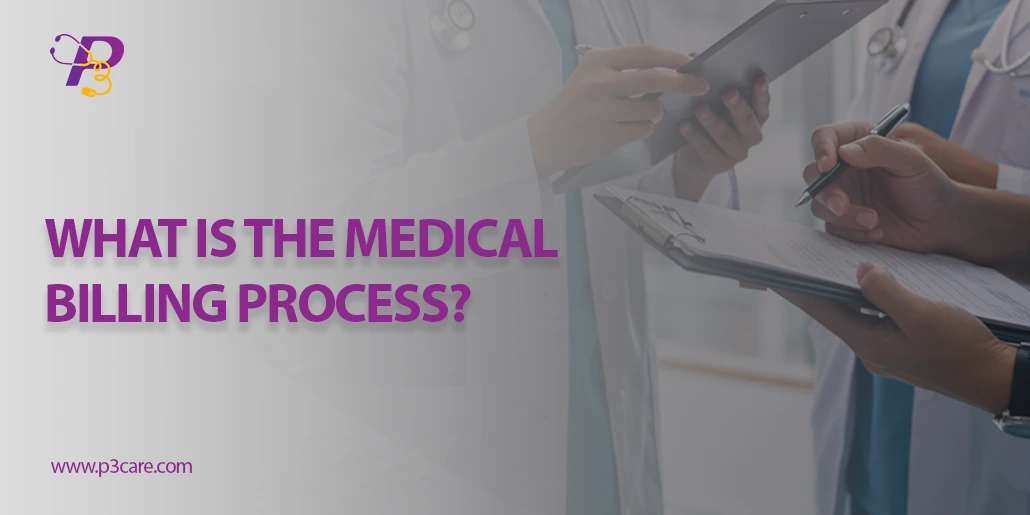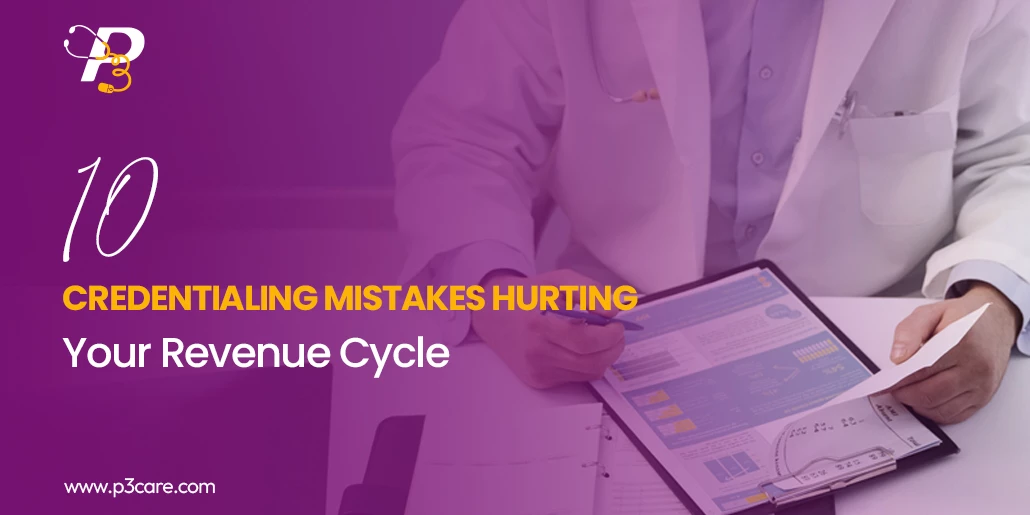

Did you know that credentialing errors cost healthcare providers millions in lost revenue every year? For hospitals and clinics across the USA, credentialing isn’t just paperwork — it’s a critical step that directly impacts billing and reimbursements. To prevent these costly mistakes, partnering with reliable credentialing services can help ensure your process runs smoothly and efficiently.
A 2023 Medical Group Management Association (MGMA) report found that over 80% of healthcare organizations experience delays or errors in credentialing, causing claim denials and delayed payments. Incomplete or inaccurate applications are responsible for up to 85% of these reimbursement issues, leading to substantial financial losses annually. If you’re facing challenges with credentialing, consider outsourcing credentialing to a professional service to reduce these risks.
In this article, we’ll explore the top 10 credentialing mistakes that disrupt your revenue cycle and share straightforward fixes to keep your cash flow healthy.
One of the most frequent and expensive pitfalls for healthcare organizations is waiting too long to credential a provider. Since credentialing can take 90-120 days or longer, if a healthcare organization begins the process late, the provider will not be credentialed in time to bill for services or to see patients as part of their network. This means the healthcare organization will lose revenue for potentially weeks or months, and it can be damaging to their cash flow, considering abrupt changes to budgets.
Start credentialing 3-4 months before the provider starts the new role or their license expires. Consider using a main calendar in an office for everyone to enter, updating timelines, and notifying before updating assignments. Those who look at deadlines will be notified in advance so onboarding can continue uninterrupted, and billing will be able to continue throughout.
Incomplete or inaccurate credentialing applications are a leading factor in delays and denials. Missing information, expired licenses, typos, and mismatches in license or work information are among the many reasons why payers absolutely refuse or send the application back to the provider for clarification. An industry study has indicated that nearly eighty-five percent of credentialing applications have errors or omissions, resulting in slow responses and avoidable loss of revenue.
A checklist and a second person to review the documents and process may drastically reduce errors and omissions. Consistent staff training on credentialing standards and requirements will also improve accuracy.
Losing track of renewal deadlines related to licenses, certifications, or CAQH attestations can lead to a loss of credentialing and result in claims being denied and a disruption to revenue flow. Oftentimes, these renewals are missed in our busy schedules, which can lead to lapses in credentialing and impact the revenue cycle.
Automate reminders for every credential renewal and set alerts for 60, 30, and 15 days before expiration. Review each credential’s status regularly to catch any upcoming expirations and avoid lapses.
Allowing providers to see patients before credentialing and payer enrollment has occurred is a bad and risky decision. Reimbursement claims for services delivered while the provider is uncredentialed will almost certainly be denied or held up for payment, and will delay revenue coming into the practice. It could also lead to compliance issues, and liability is a possibility, depending on whether it is criminal or civil exposure.
Implement a strong policy: Don’t schedule patients or bill for services until the credentialing and enrollment process has been fully completed. Credentialing status dashboards can track providers’ credentialing status and prevent premature onboarding.
Many organizations make the error of thinking credentialing is the same as payer enrollment. They are not. Credentialing is a provider qualification determination, while payer enrollment secures the provider in a specific insurance network. Failure to complete either step, or not understanding the distinction, can lead to denied claims—even if the credentialing is complete.
Create distinctly separate workflows for credentialing and enrollment. Consider using checklists for each process for every payer to help your team stay on track and on schedule.
Credentialing can be complicated, and it is often assigned to undertrained team members or team members who already have too many responsibilities, leading to errors, delays, or missed deadlines. In a 2022 industry survey, 42% of healthcare organizations had no dedicated credentialing specialist, which increases revenue risk.
Invest in dedicated credentialing staff or consider using a medical credentialing service to credential your providers. Ensure that, no matter your provider enrollment process, there is ongoing training on payer credentialing and compliance with required and revised standards.
Even in the best case, an application can be “lost in the shuffle.” Payers often request further documentation or clarification. Missing or delaying requests can stall credentialing and put revenue in limbo.
Designate a clear responsibility for follow-up. Create a tracking system for submissions, responses from payers, and deadlines. Set regular check-in meetings on a schedule—particularly for high-volume providers— to prevent unnecessary blockers to the revenue stream.
Healthcare organizations with multiple sites or departments frequently lack coherent and standardized credentialing protocols. When each group or team is utilizing different forms or processes, that often leads to increased errors, delays, and compliance gaps.
Include a standardized credentialing process/cycle as a standardized process across the organization. Use standardized template forms, checklists, and/or credentialing software. Train staff on the methodology needed for consistency.
Not implementing background checks or not tracking exclusion lists beforehand (for instance, OIG or SAM) can lead to significant compliance violations. If a provider or any behavioral health personnel is excluded from federal programs and is still able to practice, your organization can face fines, penalties, or loss of billing privileges.
Thorough background checks are conducted at the time of initial credentialing and screen all providers on a monthly basis against both the state and federal exclusion databases. Consider automating this process by implementing credentialing software to take away some of this manual oversight.
Credentialing through spreadsheets, paper files, or old systems puts your organization at risk for human error, missed deadlines, and ineffective tracking. Manual processes also complicate scaling as your organization expands.
Invest in a digital credentialing solution that allows for automation, document management, renewal alerts, and dashboards in real time and experts from P3care can take care of these issues. Examples of tools such as Modio Health, CAQH ProView, or VerityStream would be great for operational efficiency, error reduction, and compliance.
While credentialing may feel like an administrative exercise, the effect on your revenue cycle is dramatic. From late reimbursements and denied claims to compliance risk, even a single credentialing error can cost your organization hundreds of thousands of dollars.
Mitigating the top 10 credentialing mistakes in this blog can mitigate delays, protect revenue, and ensure providers are registered and billable. You need to be deliberate – utilize a proactive, standardized, and technology-driven approach to each piece in the credentialing process.
Credentialing involves verifying a provider’s qualifications and licenses. It is necessary for billing insurance, regulatory compliance, and participation in insurance networks (payors). If credentialing is not completed, then claims for services rendered may get denied.
The credentialing process will take an average of 90 to 120 days. Starting early, if possible, will help prevent delays in onboarding a provider, especially with billing considerations.
Credentialing is the process of verifying the qualifications of a provider. The payer enrollment process is the provider’s ability to join insurance networks (or payers). Providers need to be credentialed and enrolled in payer networks in order to be paid for services rendered.
Expiring licenses, or licenses that are past the renewal date, may lead to claims being denied for services, and billing issues until the issue is fixed.
Yes, automation will certainly decrease errors, send alerts for renewals, track applications, etc., which will help credentialing services move more quickly and accurately than possible by a human staff member.
If a practice gets frequent denials, delays, or no one is commission to credentialing in house, the practice should consider outsourcing credentialing to a firm that accurately and quickly processes credentialing.
Yes, P3Care offers full-service medical credentialing services for clinics and hospitals across the USA to help decrease time to credentialing and improve reimbursement rates and lessen the time involved with credentialing verification.

